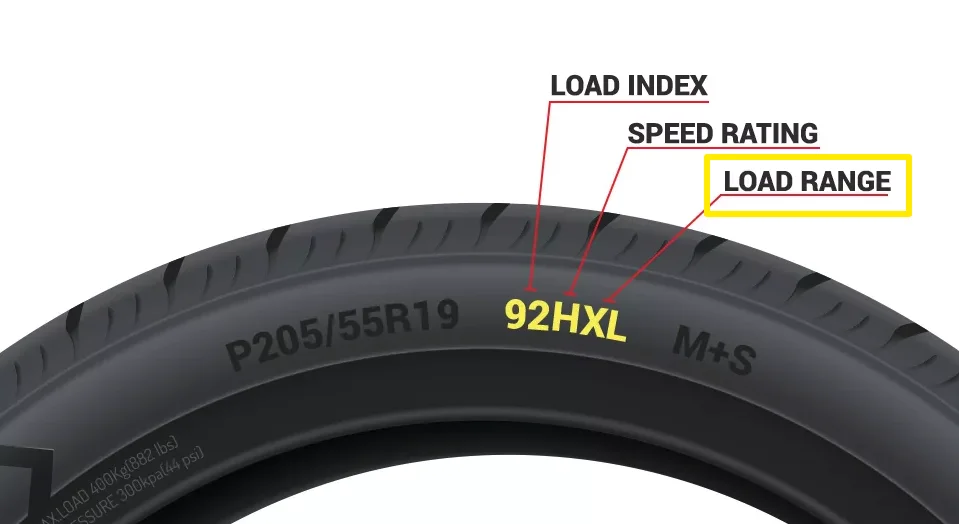Tire Load Range Explained

Replacing the old tires on your car or upgrading them is not a simple process. As you move to a newer model, there are several things you should look out for. For example, an often-overlooked aspect is the tire load range.
Which came first, the tire or the air?
The most common misconception that people make about the tire is which part is responsible for holding the weight. Most people think that the sidewall is the one doing all the job, but in reality, it’s the air inside. I don’t claim that the sidewall has no purpose in that area; I’m just saying that the air is the most crucial part of that system.
Overall, the principle is simple – to carry heavier loads, you will need to have more air in the tires. It will prevent them from squishing from the weight while being safe to drive.
Load range vs. load index
Even though they sound similar, there are some differences.
A tire load index is a number showing you how much weight each tire can carry. The rating number can be looked up in a chart to determine the maximum load that each tire can handle.
The load range is similar but in a different way. It’s a rating that each tire gets, which describes how durable the tire is at its maximum air pressure. In other words, how much load the tire can handle when it’s being pumped and operated at max pressure.
Tire load range vs. tire ply rating
The age-old battle between these two ratings is practically pointless, as both of them are the same. They represent the maximum load they can carry at the maximum tire pressure. The difference between them is how they are presented and the era they come from.
Tire ply rating is the older sibling out of these two and was used in times when tires were designed using cotton. The ply rating was used to show the number of layers used in the tire, which shows how strong the tire was.
Since modern tires are not made from cotton, the ply rating cannot be used. Today, the tires are made from much stronger compounds, and the number of plies is not the relevant aspect that determines the load capacity at the maximum air pressure.
Load ranges per vehicle
The tire load range mainly depends on the type of vehicle you have, and there are two types of ratings: P and LT.
P-metric are load ranges used for passenger tires in general. They are designed to take the car’s load and some additional weight which mainly depends on the model. There are 3 load ranges of the p-metric tires: light, standard and extra load or LL, SL, and XL, for short. The LL and SL have a maximum load pressure of 35 psi, while XL can reach 41 psi.
P-Metric Passenger Vehicle Tires
| Load Ranges | Abbreviated | Max. Load Pressure |
| Light Load | LL | 35 psi (240 kPa)* |
| Standard Load | SL (or nothing) | 35 psi (240 kPa)* |
| Extra Load | XL | 41 psi (280 kPa)* |
LT-metric is the type of tires designed for trucks, meaning that they can hold the vehicle’s weight and additional cargo, much higher than P-metric. There are 5 different types of LT-metric, and they are determined by the ply rating, which can be 4, 6, 8, 10, or 12. The maximum load pressure starts from 35 psi and increases by 15 psi for the next ply rating, with the highest going up to 95 psi.
LT-Metric, LT-Flotation and LT-Numeric Light Truck Tires
| Load Ranges | PLY Rating | Abbreviated | Max. Load Pressure |
| B | 4 | B | 35 psi (240 kPa)** |
| C | 6 | C | 50 psi (350 kPa)** |
| D | 8 | D | 65 psi (450 kPa)** |
| E | 10 | E | 80 psi (550 kPa)** |
| F | 12 | F | 95 psi (650 kPa)** |
FAQs
Is a higher ply tire better?
In general, yes. Higher ply tires can carry bigger loads at higher air pressure.
What does load range mean on a tire?
The shortest answer is that a load range determines the maximum load the tire can carry while being inflated at the maximum air pressure it can handle.






